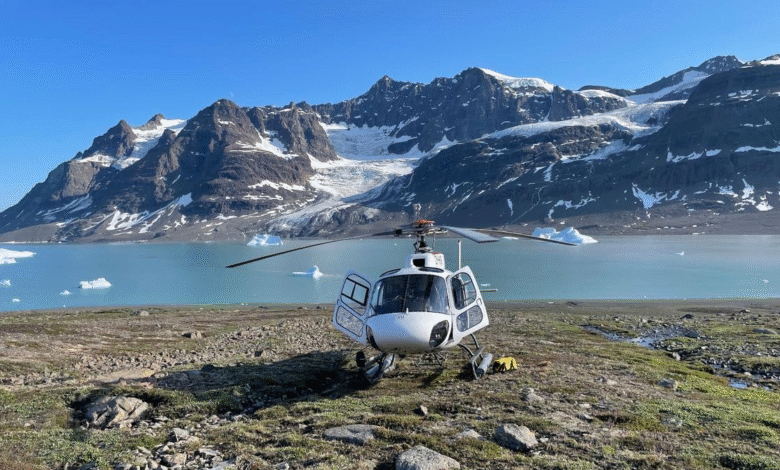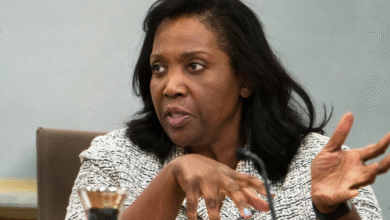Greenland Mining Prospects: A Strategic Overview

Greenland mining prospects are gaining attention as the world increasingly seeks sustainable and diverse sources of mineral resources. This vast Arctic island, rich in minerals like rare earth elements and molybdenum, presents significant opportunities for economic development despite its challenging geography and infrastructure limitations. The Greenlandic government has expressed a pragmatic approach, favoring a controlled number of active mines—around five to ten—rather than full-scale mining operations, thereby aiming for a balance between mineral extraction and environmental stewardship. As nations compete for critical materials essential in technologies and renewable energy, Greenland’s strategic location is positioning it as a vital player in the Arctic mining landscape. With a commitment to stringent mining policies, Greenland is poised to leverage its mineral wealth while ensuring responsible management and community support.
The mineral potential of Greenland is attracting global interest, as various sectors look to the Arctic for critical resources that are scarce elsewhere. This territory, known for its harsh climate and limited infrastructure, is increasingly recognized for its unique wealth of minerals including rare earth elements and graphite, which are crucial to modern technology and green energy initiatives. Unlike traditional major mining countries, Greenland is focused on a selective approach, aspiring to maintain only a handful of mining operations to minimize environmental impact and support local communities. As international pressure grows for diverse mining sources, Greenland provides a strategic alternative to reliance on dominant players like China for essential materials. The evolution of its mining policy reflects a careful balance between resource extraction and ecological responsibility, setting a notable example for other resource-rich regions.
The Current State of Greenland’s Mineral Resources
Greenland is rich in mineral resources, often regarded as a significant potential player in the global mineral market. The island has vast deposits of important minerals like copper, gold, nickel, and rare earth elements. However, these resources remain largely untapped due to various challenges including its extreme weather conditions, isolation, and lack of substantial infrastructure. As such, while it showcases promising prospects for mineral extraction, the practicalities involved in capitalizing on these riches pose significant barriers.
The Danish territory’s mineral resources have attracted interest from both local and international mining companies. Recent developments suggest a shift in focus towards sustainable and responsible mining practices that could help in mitigating environmental risks while tapping into these valuable resources. The Greenlandic government aims to balance economic development with environmental stewardship, ensuring that any advancements in mining policy align with strict regulations that prioritize ecological preservation.
Frequently Asked Questions
What are the current Greenland mining prospects for rare earth elements?
Greenland mining prospects for rare earth elements are promising, as the territory is recognized for its rich mineral resources. Recent projects, such as the Tanbreez rare earths mine, have garnered international attention, highlighting Greenland’s potential to become a significant player in the rare earths market. However, Greenland’s government emphasizes a cautious approach, aiming to maintain a balance between economic development and environmental sustainability.
How does Greenland’s mining policy impact economic development?
Greenland’s mining policy focuses on sustainable economic development rather than becoming a major mining nation. The government encourages a limited number of active mines—ideally 5 to 10—to ensure local populations are not overwhelmed by extensive mining activities. This policy aims to strategically utilize Greenland’s mineral resources while upholding high environmental standards.
What minerals are part of Greenland’s mining initiatives?
Greenland’s mining initiatives encompass a variety of minerals including graphite, gold, copper, nickel, molybdenum, and rare earth elements. A 2023 study showed that many critical raw materials essential for sustainable energy transitions are found in Greenland, positioning the island as a strategic alternative to countries with similar resources.
What are the environmental considerations of mining in Greenland?
Greenland maintains high environmental, social, and governance (ESG) standards within its mining sector. The government acknowledges past challenges with mining pollution and prioritizes community trust and sustainable practices in its mining undertakings. This approach ensures that mining development aligns with the environmental values and support of the local population.
How does Greenland’s geographical challenges affect its mining prospects?
Greenland’s geographical challenges, such as its severe climate and remote terrain, pose significant obstacles to mining operations. These factors contribute to logistical complications, requiring extensive infrastructure developments to exploit the island’s mineral resources effectively. Therefore, while opportunities exist, they come with considerable challenges that must be strategically addressed.
What is the significance of Greenland’s mineral resources in the global market?
Greenland’s mineral resources are increasingly significant in the global market, particularly for industries relying on rare earth elements and critical raw materials. As the world seeks alternatives to China’s dominance in this sector, Greenland’s resource potential presents opportunities for investment and development while fostering sustainable practices to protect the environment.
What future developments can we expect in Denmark’s mining ventures in Greenland?
Future developments in Denmark’s mining ventures in Greenland are likely to focus on sustainability and technological advancements to address logistical challenges. Investments, such as those from U.S. entities, may drive further exploration and extraction of Greenland’s mineral resources, aligning with global demand while considering environmental impacts.
Is the mining industry supported by the Greenlandic population?
Yes, the mining industry is generally supported by the Greenlandic population, primarily because of the government’s commitment to high environmental standards and community welfare. This support is critical as Greenland looks to develop its mineral resources responsibly while ensuring that local interests are prioritized.
How does Greenland’s mining landscape compare to other Arctic regions?
Greenland’s mining landscape is unique compared to other Arctic regions due to its regulatory framework and commitment to sustainable practices. While many Arctic areas possess rich mineral resources, Greenland’s focused approach on selective mining operations aims to balance economic growth with environmental preservation, distinguishing it from regions that may pursue more aggressive mining strategies.
| Key Points | Details |
|---|---|
| Greenland’s Mining Aspirations | Greenland is not interested in becoming a major mining nation but seeks to maintain a few active mines at a time. |
| Geopolitical Attention | Recent international focus, including interest from the U.S. government on Greenland’s resources. |
| Obstacles to Mining Development | Extreme climate, remote terrain, and insufficient infrastructure hinder mining potential. |
| Current Mining Projects | Active mining projects for graphite, gold, copper, nickel, and rare earth elements are underway. |
| Environmental Standards | Greenland maintains high environmental, social, and governance standards, crucial for community support. |
| Future Prospects and Independence | Potential for Greenland to evolve into an independent state, supported by its resources and geopolitical positioning. |
Summary
Greenland mining prospects are being reshaped by the territory’s desire to manage its resources sustainably. With a marked disinterest in becoming a leading mining nation, Greenland aims to host only a handful of active mines while upholding stringent environmental standards. This approach signals a commitment to responsible mining, balancing economic opportunity against ecological preservation. As interest from global powers and mining firms grows, the focus will likely remain on leveraging Greenland’s mineral wealth while preserving its unique landscapes and community integrity.




